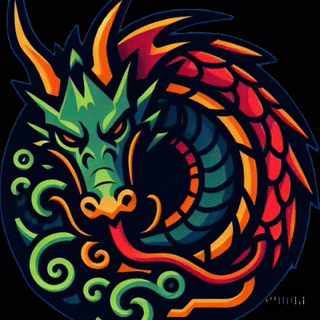The Hierarchy of Aztec Gods: A Comprehensive Guide
Introduction
The Aztec civilization, which flourished in Mesoamerica from the 14th to the 16th century, had a complex and highly structured pantheon of gods that played a central role in their religious and cultural life. The Aztecs believed their deities governed every aspect of existence, from creation to war, agriculture, and the afterlife. This paper explores the hierarchy of Aztec gods, their roles, and how they influenced Aztec society.
The Supreme Deities
At the top of the Aztec pantheon were primordial and creator gods responsible for cosmic order and existence:
Ometeotl
Ometeotl is the dual god representing both male and female principles, often seen as an abstract and overarching force of creation. This deity embodies duality, balance, and the origin of all things but was not widely worshiped in temples like other gods.
Tezcatlipoca
A powerful and omnipresent god, Tezcatlipoca was associated with fate, destiny, and rulership. He was often depicted as an adversary to Quetzalcoatl and played a crucial role in the cyclical destruction and recreation of the world.
Quetzalcoatl
The feathered serpent god, Quetzalcoatl, was a major deity of wisdom, learning, and wind. He was credited with creating humanity and bestowing upon them important cultural advancements such as agriculture and writing.
Huitzilopochtli
As the patron god of the Mexica (the dominant Aztec group), Huitzilopochtli was the deity of war and the sun. He was central to Aztec military conquests and required significant human sacrifices to ensure cosmic stability.
Tlaloc
Tlaloc was the god of rain and fertility, crucial for agricultural prosperity. He was both benevolent, providing rain for crops, and fearsome, capable of sending devastating floods and droughts.
The Second Tier: Specialized Gods
Below the supreme deities were gods governing specific aspects of life and nature:
Xipe Totec
The god of agriculture, renewal, and spring, Xipe Totec was associated with rebirth and transformation. He was depicted wearing flayed human skin, symbolizing the shedding of old life for new growth.
Tonatiuh
The sun god and a vital figure in Aztec cosmology, Tonatiuh demanded the continuation of human sacrifices to keep the sun moving across the sky.
Coyolxauhqui
The moon goddess, Coyolxauhqui, was slain by Huitzilopochtli in Aztec mythology, symbolizing the perpetual struggle between the sun and the moon.
Mictlantecuhtli
The ruler of the underworld, Mictlantecuhtli presided over the dead and guided souls through the afterlife.
The Lower Tier: Minor Deities and Patron Gods
Numerous lesser deities represented specific aspects of daily life, professions, and nature:
Chalchiuhtlicue - Goddess of lakes, rivers, and childbirth.
Xochiquetzal - Goddess of beauty, love, and fertility.
Centeotl - Maize god, essential to the Aztec diet and agriculture.
Ehécatl - A wind deity associated with Quetzalcoatl.
Religious Structure and Worship
The Aztec religious hierarchy mirrored their pantheon, with a highly organized priesthood dedicated to different gods. Rituals, temples, and human sacrifices played a central role in appeasing these deities. The Templo Mayor in Tenochtitlán was a prime example, dedicated to both Huitzilopochtli and Tlaloc.
Further Research and Scholarly Resources
For those interested in deepening their understanding of the Aztec pantheon, the following resources provide valuable insights:
Codex Borgia - An ancient Mesoamerican manuscript detailing religious practices and gods. (Available at: https://www.famsi.org/research/graz/borgia/)
The Aztecs by Michael E. Smith - A comprehensive study on Aztec culture, society, and religion.
Ancient Mexico and Central America: Archaeology and Culture History by Susan Toby Evans - An academic resource on Mesoamerican civilizations.
The Florentine Codex - A 16th-century ethnographic study by Bernardino de Sahagún. (Available at: https://www.wdl.org/en/item/10623/)
Conclusion
The Aztec pantheon was an intricate and hierarchical system reflecting their worldview, cosmology, and societal structure. Understanding these deities provides critical insight into how the Aztecs lived, worshiped, and conceptualized their universe. Scholars and general readers alike can benefit from further exploration of these divine figures and their enduring legacy in Mesoamerican studies.
480-366-3550 (Domain Sales)
© SDBEST LLC, 2025. All rights reserved.
Sponsorship Disclosure
Terms of Service
